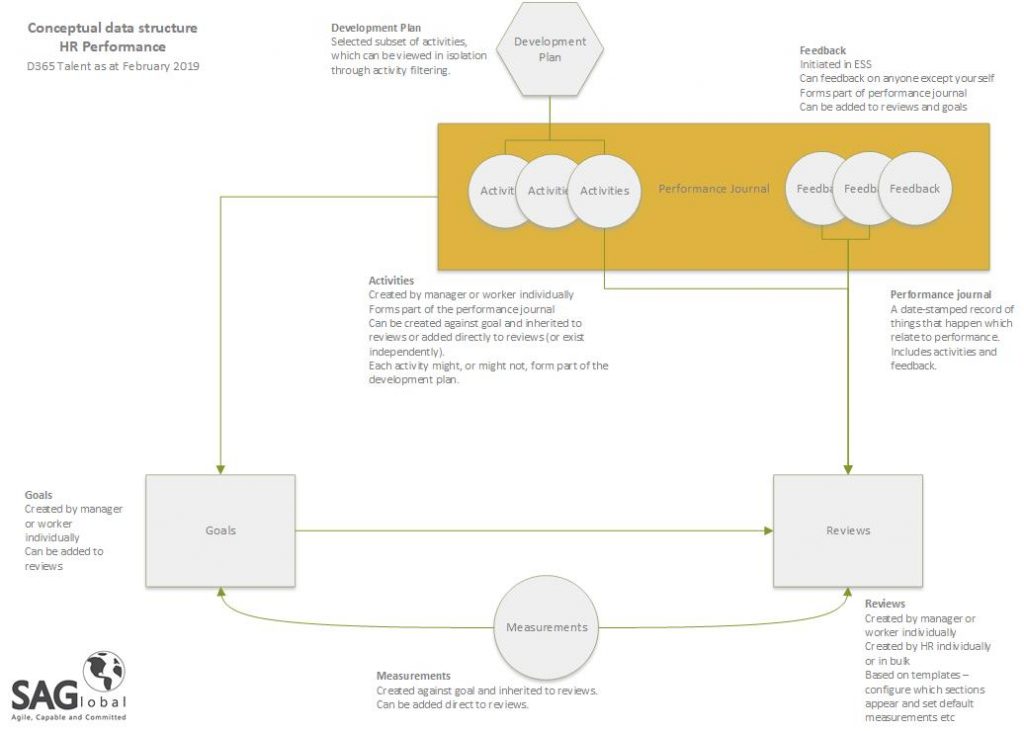I’m about to kick off a project phase implementing performance management for a customer. It’s not something I do every day, so I’m taking a bit of time to refresh my memory. While I’m doing that, I thought I’d ping out a few posts about how it works (so that refreshing my memory is quicker next time around). As always, if this is useful to someone else later on, well that’s great.
The performance management module in Talent, as with the rest of the product, owes a strong legacy to the HR module in Finance and Operations, and before that, in AX2012. But it’s different. The world of performance reviews has changed significantly in the last few years. Increasing numbers of organisations are ditching the annual performance review (all too often an uninspiring box ticking exercise) in favour of a little-and-often approach to feedback and coaching. The performance module in Talent reflects that shift – it’s a massively configurable bit of functionality that you can do loads and loads of things with. Partly because of this configurability, it takes a while to really learn how to use it to its best effect, because there’s so much flexibility and so many options available.
Before you do anything with performance in Talent it’s worth being familiar with the key concepts and how they relate to each other. I’m a visual thinker, so I prefer to draw this than write about it. I came up with this graphic in 2017, and I’ve just checked it’s still relevant and up to date. I can’t stop you copying it and creating your own version, but if you pinch mine without so much as a thank you, I will find you… You can click on it to view it full size in a new window.
Once you’ve got a basic idea of how reviews are different from the performance journal, what goals do, where they fit, and how to use them if you don’t want anything else, what happens with feedback that’s been submitted and what on earth measurements are for – you’re just about ready to get started.
But before you do – sit down with a piece of paper and draw out your performance review process. Jumping straight into Talent and trying to set up a process without thinking through how you want it to work will trip you up quickly. Yes, there are certain things you might want to do which is not how the product works out of the box. That’s fine and absolutely to be expected. You have to be able to flex to work with that. But if you haven’t got the slightest idea if you want the employee to initiate things or the manager, how often you want them to get together, how in-depth you want the record keeping to be or what the outcome of the whole process is – you’re not ready to start. Take a step back, and remember why you’re in HR, not IT.

1 thought on “Managing performance – 1 – key concepts”